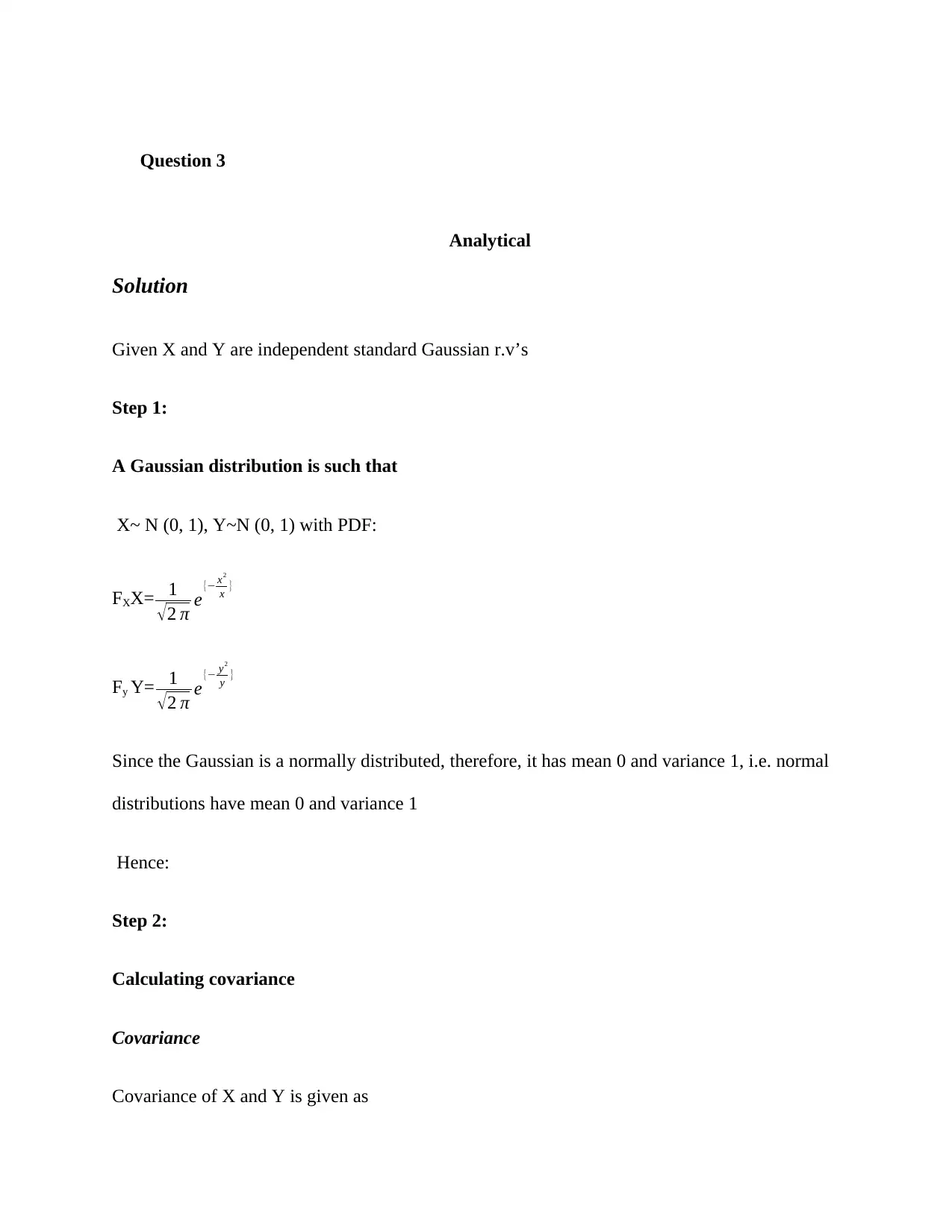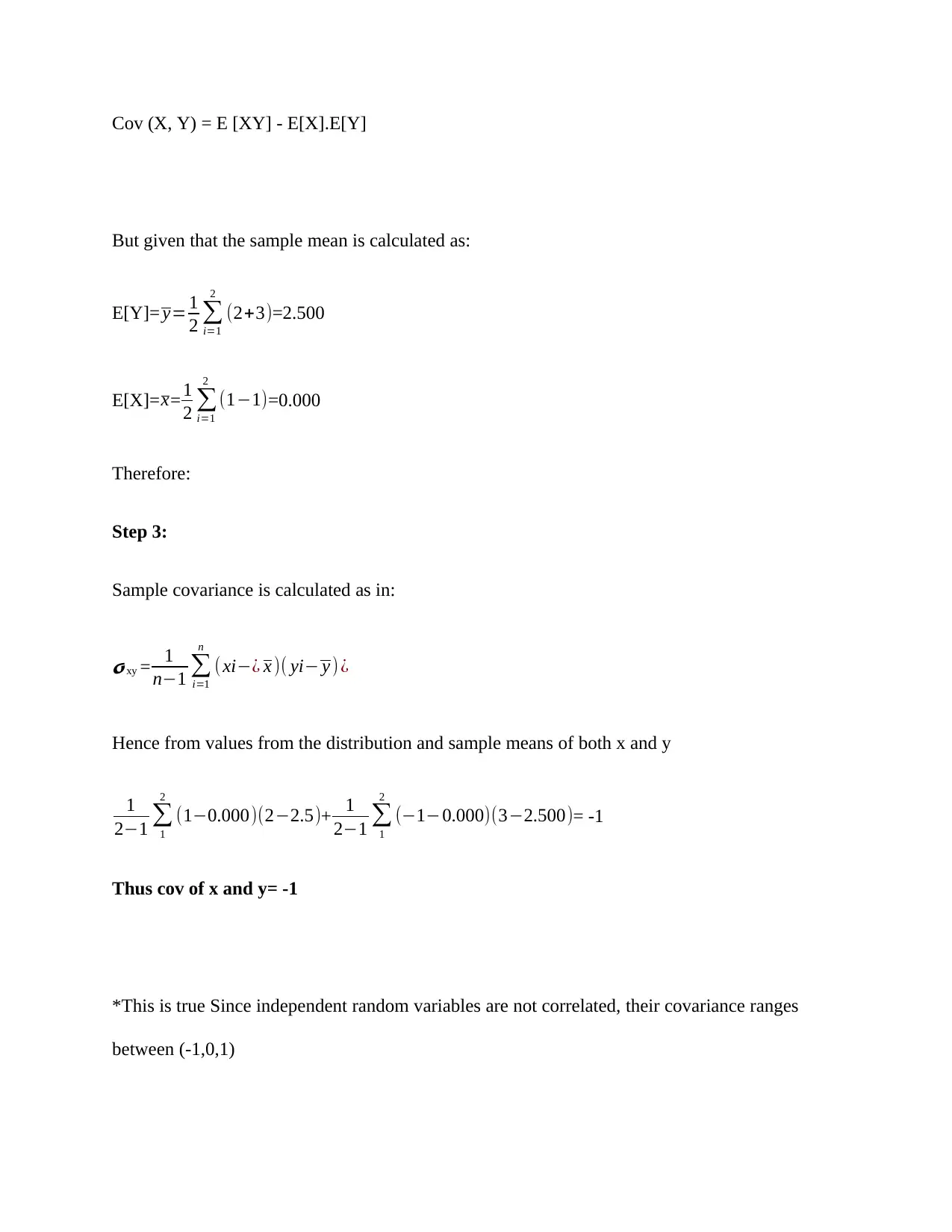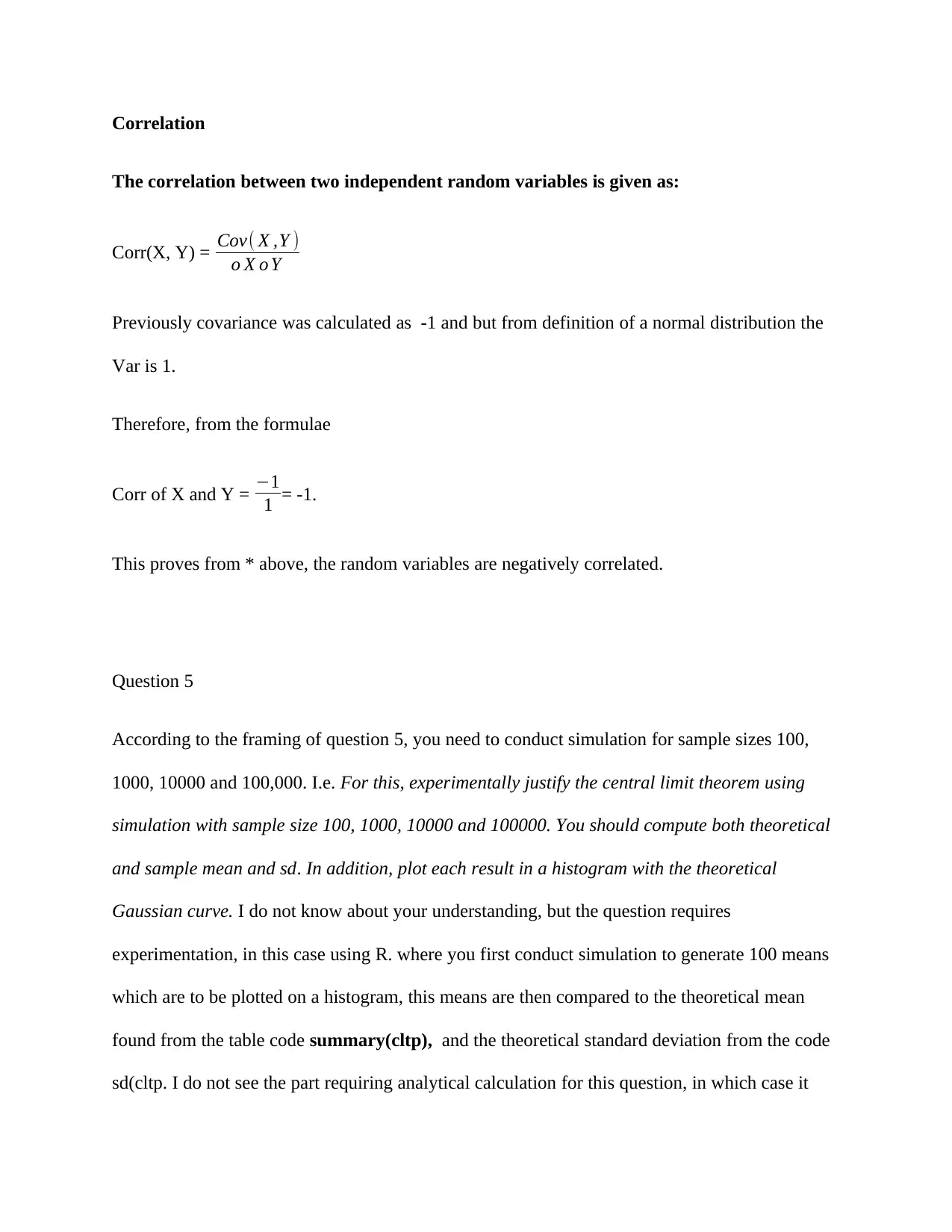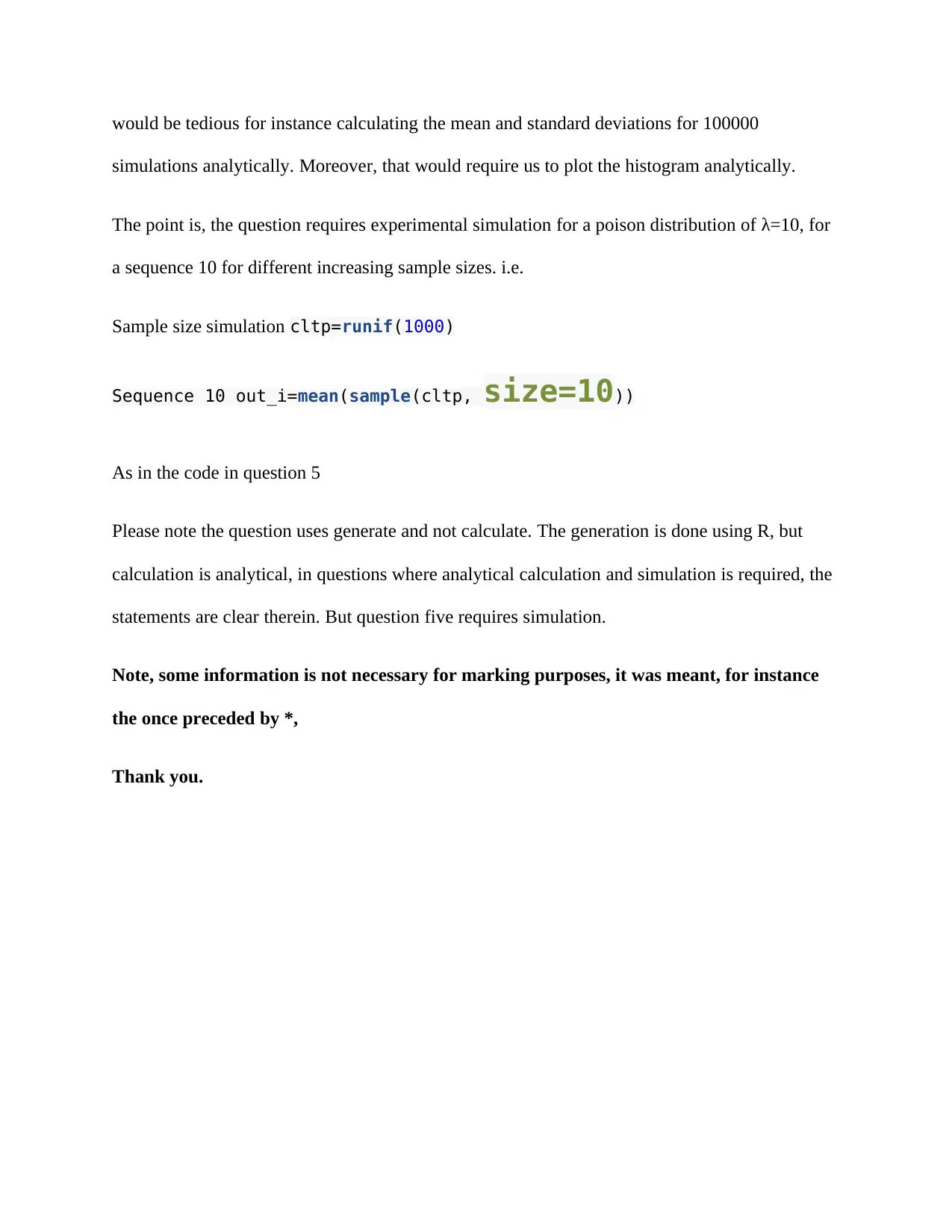FIT5197 Statistics and Probability: Solutions and CLT Simulation
VerifiedAdded on 2023/06/14
|4
|650
|342
Homework Assignment
AI Summary
This assignment provides analytical solutions and simulation-based justifications for statistical problems. It covers topics such as calculating the covariance and correlation between independent Gaussian random variables, demonstrating their negative correlation. Furthermore, it addresses the central limit theorem (CLT) through experimental simulation using R with varying sample sizes (100, 1000, 10000, and 100000) for a Poisson distribution, comparing theoretical and sample means and standard deviations, and plotting histograms against the theoretical Gaussian curve. The assignment emphasizes the use of simulation for generating data and analytical methods for validation, clarifying the distinction between generation and calculation in the context of statistical analysis.
1 out of 4










![[object Object]](/_next/static/media/star-bottom.7253800d.svg)